
The Solar-Terrestrial Centre of Excellence (STCE) is a collaborative network of the Belgian Institute for Space Aeronomy, the Royal Observatory of Belgium and the Royal Meteorological Institute of Belgium.
 |
Published by the STCE - this issue : 4 Dec 2014. The Solar-Terrestrial Centre of Excellence (STCE) is a collaborative network of the Belgian Institute for Space Aeronomy, the Royal Observatory of Belgium and the Royal Meteorological Institute of Belgium. |
| Archive of the newsletters | Subscribe to this newsletter by mail |
NOAA 2223 was a small sunspot group that appeared on 27 November and rounded the west limb on 02 December. It would have been just another number in the long list of sunspot groups, if it wasn't for its reversed polarity. Indeed, during this solar cycle 24 (SC24), the leading spots of a bipolar sunspot group in the northern hemisphere should have a black (negative) magnetic polarity, meaning the magnetic field lines return to the solar interior. The trailing spots should have a white (positive) magnetic polarity, meaning the magnetic field lines come out of the solar interior. On the southern hemisphere, this is just the reverse. When a new solar cycle starts (e.g. SC25), the spots appear at a high latitude with a polarity opposite to those groups of the old cycle, located near the solar equator. All this is perfectly in accordance with our current understanding of the solar dynamo.
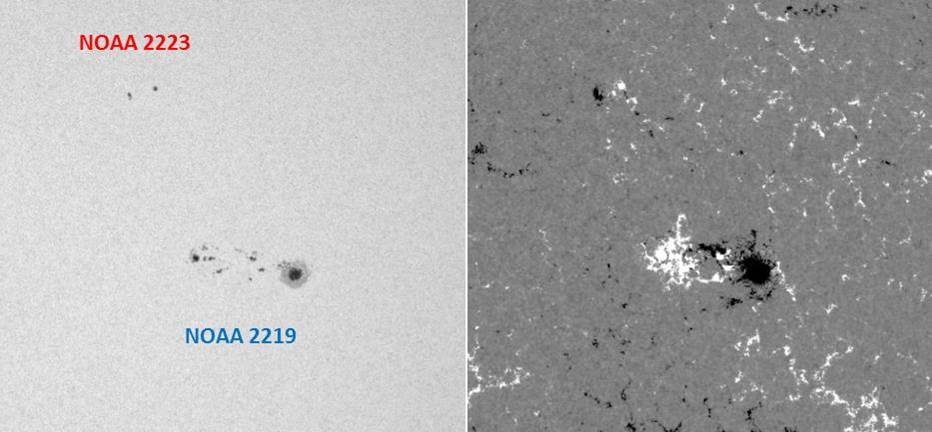
NOAA 2223 had a polarity opposite to that of the other groups of the northern solar hemisphere. It is of course not correct to conclude from the above that this reversed polarity group is the first sign of the new solar cycle. Indeed, apart from its moderate latitude, it is well known that during a solar cycle, some sunspot groups with reversed magnetic polarity will appear, often after solar cycle maximum has taken place. In fact, statistics show that on the average 3% of the sunspot regions will show this opposite polarity. So far, and based on a quick count, SC24 seems to be a bit below this average, with only a dozen having appeared since January 2011. But then again, SC24 is only halfway, and still has plenty of years to catch up.
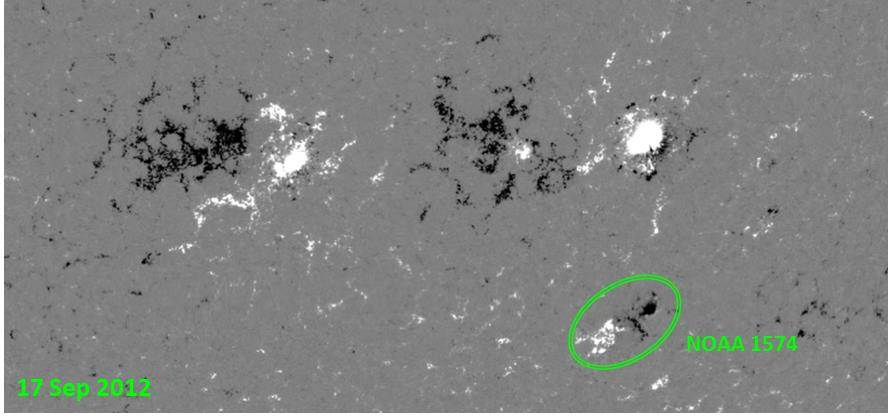
These reversed polarity regions have similar characteristics than the correctly oriented ones, perfectly able to become large and produce strong flares. Even small NOAA 2223 is suspected to have contributed to the solar activity. Indeed, it appeared just south of a long filament that had been transiting the solar disk already for a week. Then, hardly a day after NOAA 2223 appearance, it erupted and probably contributed to a complex series of non Earth-directed CMEs visible during the afternoon of 28 November and early on 29 November.
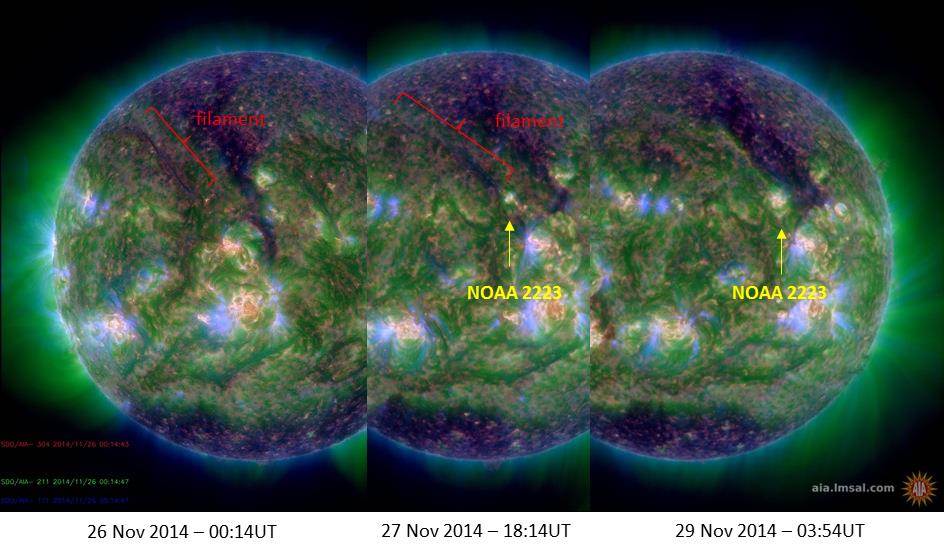
Credits - Imagery taken from the SDO website at http://sdo.gsfc.nasa.gov/data/aiahmi/
Forty-two (42) C-class flares were observed during the week, half of which were produced by NOAA 2222. This region took over from departing sunspot group NOAA 2209, which rounded the west limb on 26 November. NOAA 2222 gradually developed into the largest region visible on disk, and produced the strongest flare of the week on 27 November: a C8.2 flare peaking at 00:47UT. Other flare active groups were NOAA 2217 (6) and 2219 (8).
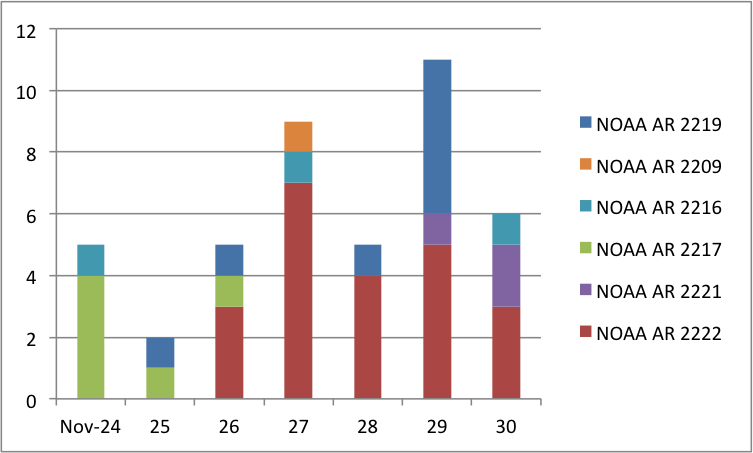
The X-ray background flux was above the C1-level on 27, 28 November and part of 29 November.
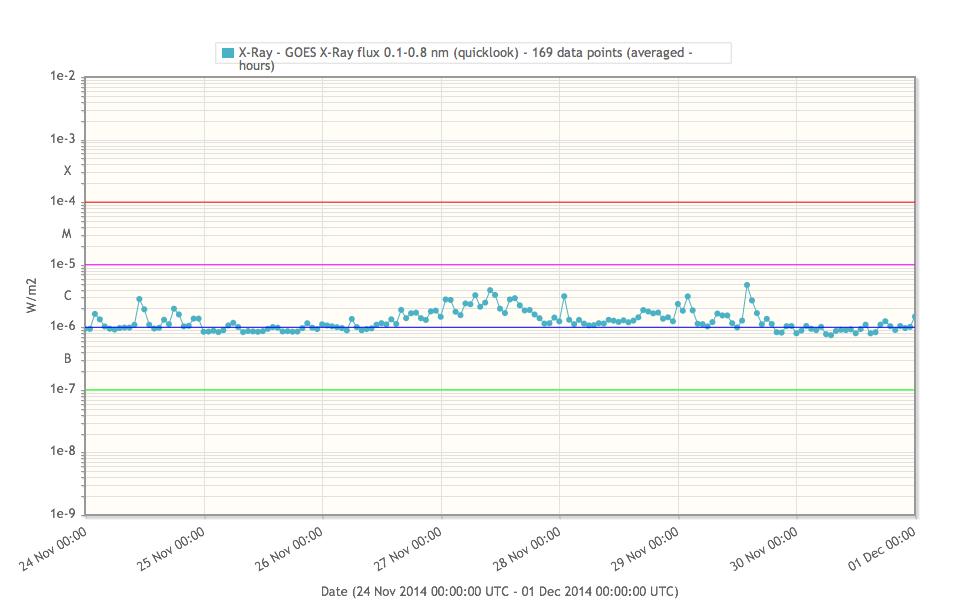
Filament eruptions were observed almost on a daily base, the largest of which occurred in the northern hemisphere west of the central meridian during the afternoon of 28 November, with SDO EUV imagery showing a slow mass ejection to the north and northwest. First observed by LASCO/C2 on 28 November at 22:12UT, CACTus issued an alert for a 220 degrees wide halo CME, stretching from the east side of the Sun over north to the west. However, this wide CME was actually the result of a complex series of separate CMEs that occurred between noon on 28 November and the morning of 29 November. Notable contributors were the aforementioned filament eruption, and a prominence eruption at the northeast limb on 29 November around 02:00UT. At least 2 other CMEs were involved, but their source is uncertain.
None of the observed CMEs had an Earth directed component.
A sector boundary crossing (SBC) was observed early on 27 November, with IMF direction promptly changing from away to towards the Sun.
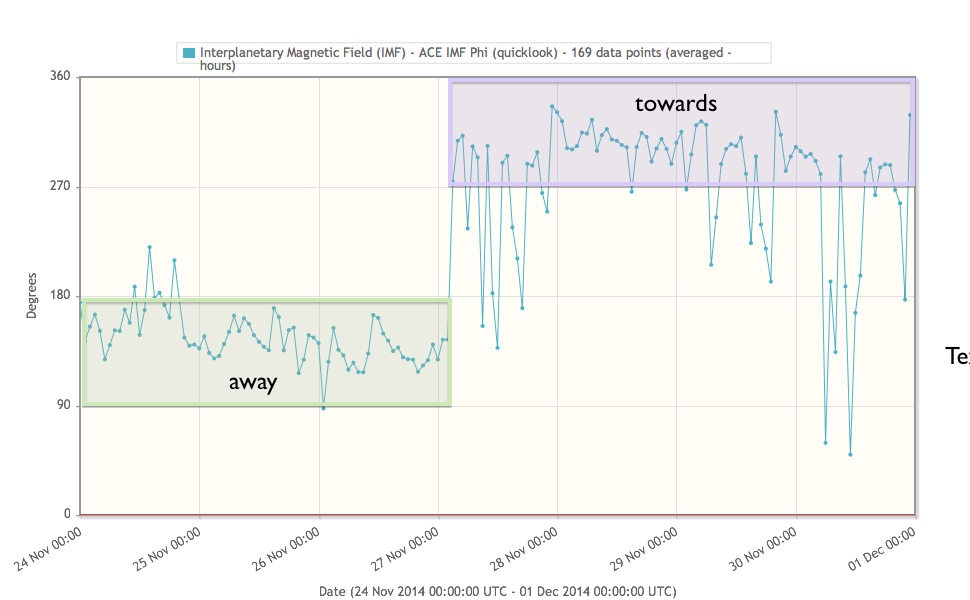
Solar wind speed declined from about 400 km/s at the beginning of the period till 290 km/s at SBC, with Bz mostly negative with values up to -6 nT and an occasional northward excursion up to +4 nT. After the SBC, wind speed first increased to values of 400 km/s in just 12 hours. After a brief decline, it then started a gradual increase from 350 km/s on the morning of 28 November and still ongoing at the end of the reporting period (430 km/s). Bz was mostly positive with values up to +13 nT, and a few brief southward excursions around -10 nT.
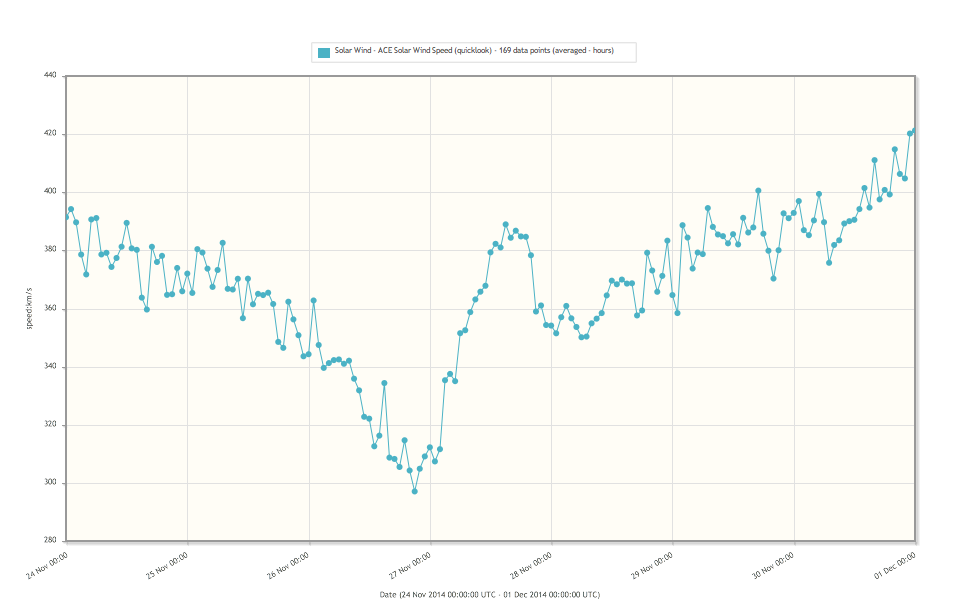
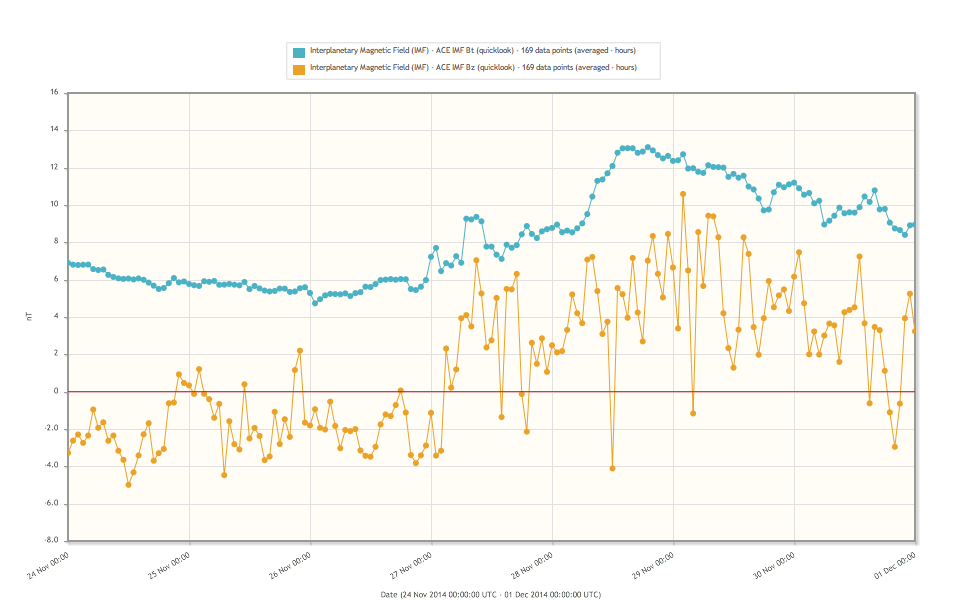
The geomagnetic field was mostly quiet to unsettled during the entire week.
Start : 2015-10-05 - End : 2015-10-09
This CSPM-2015 scientific meeting will cover various aspects of
solar dynamic and magnetic phenomena which are observed over the
entire electromagnetic spectrum: white-light, Hα, Ca II,
and radio from ground and in a variety of other wavelengths (white
light, UV and EUV, and X-rays) from space. Emphasis will also be
placed on instrumentation, observing techniques, and solar image
processing techniques, as well as theory and modelling through
detailed radiative transfer in increasingly realistic MHD models.
The long-term (cyclic) evolution of solar magnetism and its
consequence for the solar atmosphere, eruptive phenomena, solar
irradiation variations, and space weather, will be in focus. Here,
special attention will be devoted to the long-term observations
made in Coimbra and also to the results of the SPRING / SOLARNET
and SCOSTEP VarSITI studies. In particular, the weak solar activity
during the current solar maximum will be discussed. Finally, since
this meeting is organised around the 90th anniversary of performing
the first spectroheliographic observations in Coimbra, a session
will be specially dedicated to new solar instruments (both
ground-based and space-borne) that will give access to unexplored
solar atmospheric features and dynamic phenomena over the coming
years.
Website:
http://www.mat.uc.pt/~cspm2015/
Start : 2016-07-30 - End : 2016-08-07
The 41st COSPAR Scientific Assembly will be held in Istanbul,
Turkey from 30 July - 7 August 2016. This Assembly is open to all
bona fide scientists.
Website:
https://www.cospar-assembly.org/
http://www.spaceweather.eu/en/repository/show?id=553
Presentation, in French, given at the open doors of the Space Pole, Belgium, 2014
http://www.spaceweather.eu/en/repository/show?id=552
Lecture focusing on the effects of space weather, extreme space weather during SC24, and the space weather forecasting at the Space Pole (RWC Brussels). The lecture was given to the Public Observatory Beisbroek / COZMIX in Beisbroek, Brugge, Belgium. Solar amateur astronomers and public audience, in Dutch, about 35 attendees.
http://www.spaceweather.eu/en/repository/show?id=554
This presentation was given during the "ESWW11 – Forecaster Forum" splinter on 18 November 2014. It focuses on the forecast and evaluation of the flaring activity in sunspot group NOAA 2158 (September 2014). There were about 70 attendees (scientists).
http://www.spaceweather.eu/en/repository/show?id=555